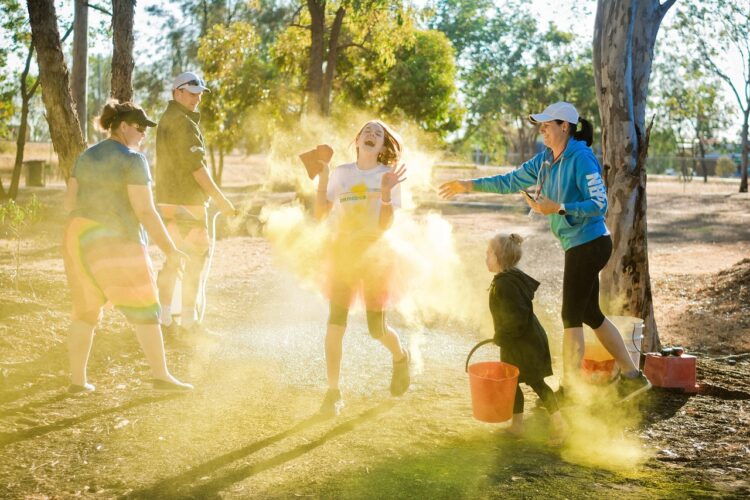Thanksgiving is a perfect time to teach kids the value of gratitude and appreciation. Beyond the delicious food and festive gatherings, the essence of Thanksgiving lies in recognizing our blessings and expressing thanks. With a little creativity, parents and teachers can make gratitude a fun and engaging part of the holiday. Here are some Thanksgiving gratitude activities for kids that will not only keep them entertained but also help them understand the importance of thankfulness.
1. The Gratitude Tree: A Visual Reminder
1.1. What is a Gratitude Tree?
A gratitude tree is a simple yet powerful way for kids to express what they’re thankful for. The idea is to create a tree where each leaf represents something that they appreciate.
1.2. How to Make a Gratitude Tree
- Materials Needed: Construction paper in fall colors (red, yellow, orange, brown), scissors, markers, and a small branch or brown paper for the trunk.
- Step-by-Step:
- Cut out leaf shapes from the construction paper.
- Have kids write or draw something they are thankful for on each leaf.
- Attach the leaves to a small branch or stick them onto a large piece of paper shaped like a tree trunk.
- Display the gratitude tree in a prominent place at home or in the classroom.
- Why It Works: This activity helps children visualize the many things they have to be grateful for, making it a great daily reminder during the Thanksgiving season.
2. Gratitude Jar: Daily Reflection
2.1. What is a Gratitude Jar?
A gratitude jar is a simple activity where kids can write down something they’re thankful for each day and place it in a jar. It encourages a daily practice of reflecting on positive experiences.
2.2. How to Create a Gratitude Jar
- Materials Needed: A mason jar or any container, slips of paper, and markers.
- Step-by-Step:
- Decorate the jar with a “Gratitude Jar” label.
- Each day, ask the kids to write one thing they are grateful for on a slip of paper and put it in the jar.
- On Thanksgiving Day, gather together to read the notes and share the memories.
- Why It Works: This activity encourages kids to think about the good things in their lives, fostering a positive mindset and appreciation for the little moments.
3. Thankful Turkey Craft: A Hands-On Project
3.1. What is a Thankful Turkey Craft?
A Thankful Turkey is a fun craft where each feather represents something a child is grateful for. This activity is perfect for preschool and elementary-aged kids, combining art and gratitude.
3.2. How to Make a Thankful Turkey
- Materials Needed: Construction paper, googly eyes, scissors, glue, markers, and a paper plate or cardboard.
- Step-by-Step:
- Cut out a turkey body shape and glue it onto a paper plate or cardboard.
- Cut feather shapes from different colored paper.
- Ask the kids to write one thing they are thankful for on each feather.
- Glue the feathers onto the turkey to create a colorful display.
- Why It Works: This hands-on project is an engaging way for kids to think about what they appreciate while making a festive decoration for the Thanksgiving table.
4. Gratitude Games: Making Thankfulness Fun
4.1. The Gratitude ABCs
This game is simple and perfect for all ages. It encourages kids to think of something they are thankful for that corresponds to each letter of the alphabet.
- How to Play:
- Start with the letter A and ask kids to name something they’re thankful for that starts with that letter (e.g., “Apples”).
- Continue through the entire alphabet.
- Why It Works: This game promotes creativity and helps kids recognize the variety of blessings in their lives, from big things like “Family” to small things like “Zippers.”
4.2. Gratitude Scavenger Hunt
A scavenger hunt with a gratitude twist gets kids moving while teaching them to appreciate their surroundings.
- How to Play:
- Create a list of prompts, like “Find something that makes you happy” or “Find something you’re thankful you can do.”
- Give kids the list and let them find items around the house or yard.
- After the hunt, have a discussion about why they chose each item and what makes them feel grateful.
- Why It Works: This activity makes gratitude tangible and allows kids to connect thankfulness to everyday objects and experiences.
5. Gratitude Journal: Reflecting in Writing
5.1. What is a Gratitude Journal?
A gratitude journal is a dedicated notebook where kids can write about things they are thankful for each day. It’s a great way to encourage reflective thinking and writing skills.
5.2. How to Start a Gratitude Journal
- Materials Needed: A notebook, markers, stickers, and other decorating supplies.
- Step-by-Step:
- Let kids decorate the cover of their gratitude journal with their names and drawings.
- Each day, ask them to write or draw three things they are grateful for.
- Encourage them to be specific, such as “I’m thankful for my friends because they make me laugh.”
- Why It Works: This practice helps kids develop a habit of looking for the good in each day, which can boost their mood and perspective over time.
6. Thanksgiving Gratitude Cards: Spreading Kindness
6.1. Making Thank-You Cards for Friends and Family
Creating thank-you cards is a heartfelt way for kids to express their appreciation for the important people in their lives.
- Materials Needed: Blank cards, colored pencils, stickers, and markers.
- How to Do It:
- Ask kids to think of someone they want to thank, such as a teacher, neighbor, or family member.
- Help them write a few sentences about why they appreciate that person.
- Decorate the cards with drawings, stickers, or even pressed leaves for a seasonal touch.
- Why It Works: This activity teaches kids the value of expressing gratitude and the joy that comes from making others feel appreciated.
7. Gratitude Role-Play: Building Empathy
7.1. What is Gratitude Role-Playing?
Gratitude role-playing involves acting out scenarios that focus on giving thanks, being helpful, or recognizing kindness in others.
7.2. How to Do Gratitude Role-Play
- Step-by-Step:
- Create scenarios where kids have the opportunity to show appreciation, like receiving a gift or helping a friend.
- Act out the scenarios, emphasizing positive expressions like “Thank you” and “I appreciate you.”
- Discuss how being grateful makes both the giver and receiver feel.
- Why It Works: Role-playing helps kids understand the importance of saying thank you and recognizing kindness, making it a practical skill they can use in daily life.
8. Conclusion: Cultivating a Heart of Thankfulness
Teaching kids about gratitude doesn’t have to be boring or forced. With these engaging activities, you can make thankfulness a natural part of their Thanksgiving experience. By focusing on fun, creative ways to express appreciation, kids can learn to cherish the people and things that bring joy to their lives. This Thanksgiving, let’s take the opportunity to foster a spirit of gratitude in our children—one that will last long after the holiday season has passed.


